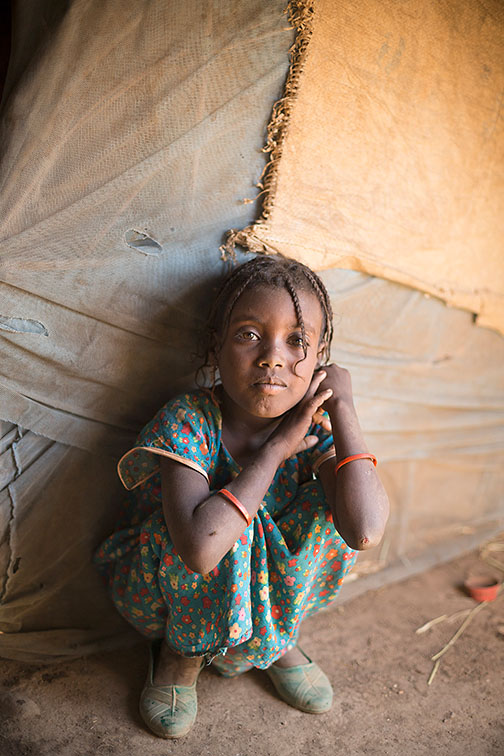There are some parts of Ethiopia right now that haven’t received more than a few sprinkles of rain in over two years. Since so many people live out in rural areas of the country and have to rely on seasonal rains to grow their own food- raising their own vegetables and livestock on small farms- that means the source of livelihood, nutrition, and sustenance for large numbers of people has vanished.
Above, a small farmer sifts through the dust of the field he planted last year, but where nothing germinated. Can you imagine having to provide for your family with just a small farm not much bigger than your back yard? That’s hard enough, but take away the water source and it becomes impossible. Below, a woman in Fentale District scoops water from a shallow well.
According to government figures, one in ten Ethiopians has been severely affected by the drought and is in need of food. At least 400,000 children are suffering from Severe Acute Malnutrition, a form of malnutrition that, if survived, will impact their growth and development, determining both their physical and cognitive abilities as adolescents and adults.
In Fentale District I witnessed families and children attempting to survive off corn flour and water, essentially what we know as gruel. The Ethiopian government has been able to purchase corn meal and distribute it to some needy families in this district. Other districts have not been so fortunate. Below, a group of children share a bowl of fried cornmeal, the only meal they will eat that day.
Lactating and pregnant mothers not only have to provide for their own bodies, but also for the those of their children, whether through internal nourishment of their unborn or with breast milk for their young babies. I encountered a number of children whose mothers just weren’t getting the nutrition they need to be able to breastfeed them. The breast milk just wasn’t there.
Pregnant and breastfeeding mothers typically need about 500 calories more per day than it takes to feed and nourish themselves, but the cornmeal diet they’ve been eating is not enough to build or maintain any muscle, let alone produce milk or nutrients for their children.
The drought has affected children in a number of ways. The biggest impact is that children are not getting the nutrition they need to develop. It takes vitamins, nutrients and protein to grow, develop, learn in school and be able to play with friends. This is especially crucial for children ages 0-5. The corn flour gruel upon which so many are surviving is not at all nutritious, however, and many aren’t doing much more than that – surviving. Below, an infant suffering from severe acute malnutrition is screened by a nurse at health center in Fentale District.
Water sources that were available before have dried up, and people are resorting to what’s left from polluted rivers or lakes, or are just digging for water and hoping to reach it. Because of water and food shortages, some schools have closed, and so the education of these children has been interrupted. The government has not released figures on the number of children that have perished because of the drought.
Documenting the impact on families of the current food crisis in Ethiopia was just one of the objectives of my recent assignment there. These materials were captured for ChildFund, who has ongoing sponsorship, water, and nutrition programs even in the midst of the drought. They’re also distributing emergency food aid to families outside their project areas. ChildFund has offices in the US, Australia, New Zealand, Canada, and Ireland (just to name those in the English-speaking world). Please consider supporting their efforts to save the lives of children during this crucial time.
















